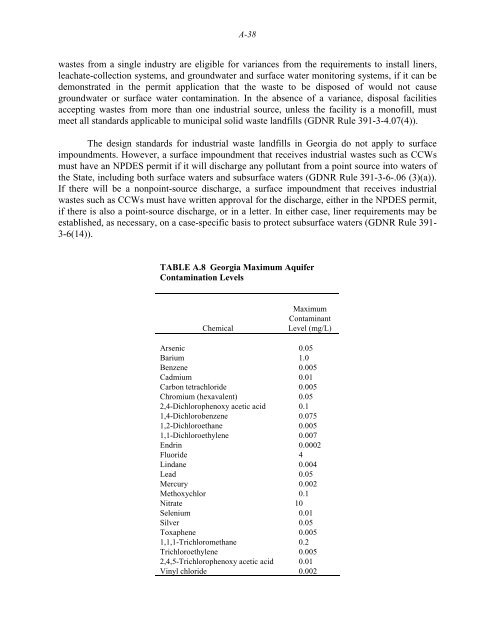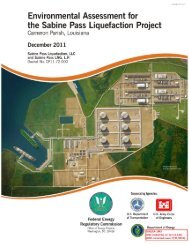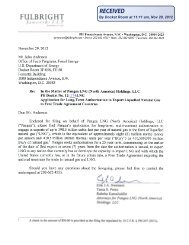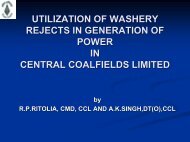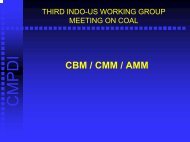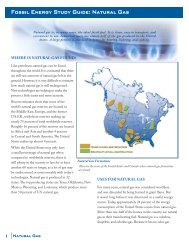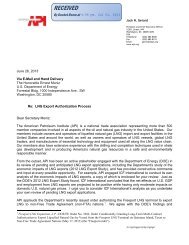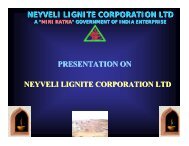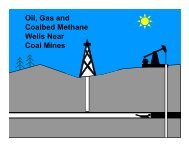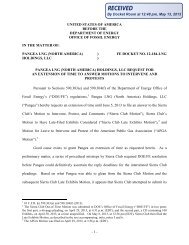Coal Combustion Waste Management at - DOE - Fossil Energy ...
Coal Combustion Waste Management at - DOE - Fossil Energy ...
Coal Combustion Waste Management at - DOE - Fossil Energy ...
Create successful ePaper yourself
Turn your PDF publications into a flip-book with our unique Google optimized e-Paper software.
A-38<br />
wastes from a single industry are eligible for variances from the requirements to install liners,<br />
leach<strong>at</strong>e-collection systems, and groundw<strong>at</strong>er and surface w<strong>at</strong>er monitoring systems, if it can be<br />
demonstr<strong>at</strong>ed in the permit applic<strong>at</strong>ion th<strong>at</strong> the waste to be disposed of would not cause<br />
groundw<strong>at</strong>er or surface w<strong>at</strong>er contamin<strong>at</strong>ion. In the absence of a variance, disposal facilities<br />
accepting wastes from more than one industrial source, unless the facility is a monofill, must<br />
meet all standards applicable to municipal solid waste landfills (GDNR Rule 391-3-4.07(4)).<br />
The design standards for industrial waste landfills in Georgia do not apply to surface<br />
impoundments. However, a surface impoundment th<strong>at</strong> receives industrial wastes such as CCWs<br />
must have an NPDES permit if it will discharge any pollutant from a point source into w<strong>at</strong>ers of<br />
the St<strong>at</strong>e, including both surface w<strong>at</strong>ers and subsurface w<strong>at</strong>ers (GDNR Rule 391-3-6-.06 (3)(a)).<br />
If there will be a nonpoint-source discharge, a surface impoundment th<strong>at</strong> receives industrial<br />
wastes such as CCWs must have written approval for the discharge, either in the NPDES permit,<br />
if there is also a point-source discharge, or in a letter. In either case, liner requirements may be<br />
established, as necessary, on a case-specific basis to protect subsurface w<strong>at</strong>ers (GDNR Rule 391-<br />
3-6(14)).<br />
TABLE A.8 Georgia Maximum Aquifer<br />
Contamin<strong>at</strong>ion Levels<br />
Chemical<br />
Maximum<br />
Contaminant<br />
Level (mg/L)<br />
Arsenic 0.05<br />
Barium 1.0<br />
Benzene 0.005<br />
Cadmium 0.01<br />
Carbon tetrachloride 0.005<br />
Chromium (hexavalent) 0.05<br />
2,4-Dichlorophenoxy acetic acid 0.1<br />
1,4-Dichlorobenzene 0.075<br />
1,2-Dichloroethane 0.005<br />
1,1-Dichloroethylene 0.007<br />
Endrin 0.0002<br />
Fluoride 4<br />
Lindane 0.004<br />
Lead 0.05<br />
Mercury 0.002<br />
Methoxychlor 0.1<br />
Nitr<strong>at</strong>e 10<br />
Selenium 0.01<br />
Silver 0.05<br />
Toxaphene 0.005<br />
1,1,1-Trichloromethane 0.2<br />
Trichloroethylene 0.005<br />
2,4,5-Trichlorophenoxy acetic acid 0.01<br />
Vinyl chloride 0.002


